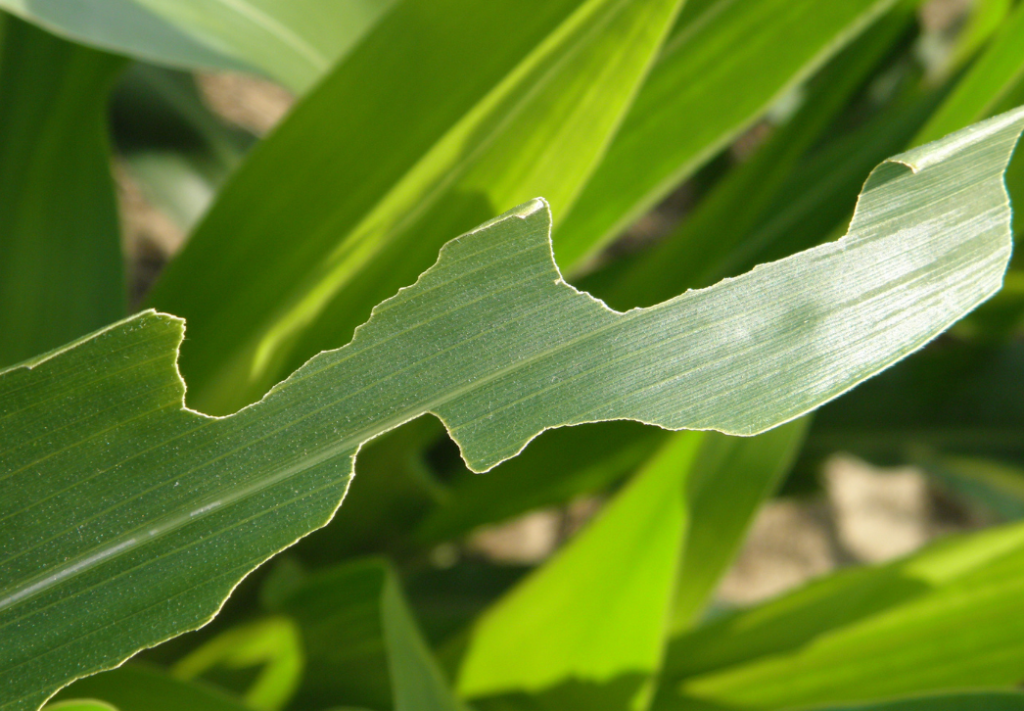Scout corn and small grain fields for true armyworm!
The second generation of true armyworm larvae are active in several Wisconsin counties. Damage has been reported in Columbia, Crawford, Dane, Dunn, Iowa, Jefferson and Taylor counties.
Scout fields as soon as possible. Rapid feeding damage will occur as larvae grow. Scout fields for corn leaves with irregular, ragged edges. Pay attention to lodged areas in small grain fields.
Scouting
In corn, check five sets of 20 plants (100 plants total) around the field at random for the presence of larvae and leaf feeding. Note the size of any larvae found. Be sure to check plants in edge rows or areas with grassy weeds for signs of armyworm activity.
In small grains, examine three feet of a row in five different areas of the field. Shake the plants vigorously to dislodge the larvae. Count the number found and note their size.


Treatment Threshold
The threshold for corn is 25% of plants with two larvae (less than 0.75 inch long) or 75% of plants with one larva.
In small grains, treatment is warranted if there are three or more larvae per square foot.
Treatment thresholds are not based on moth flights. This information is used to determine the arrival of true armyworm in Wisconsin and to forecast the optimal time to scout for larvae.
Integrated Pest Management Strategies
Larvae may migrate from grasses to host crops if a food source is depleted (e.g., herbicide applied to kill grassy weeds). Beneficial insects like ground beetles, parasitic wasps and the red-tailed tachinid fly can help limit true armyworm populations.
Chemical control may be warranted if damage exceeds the threshold and larvae are 0.75 inches or smaller. Larger true armyworms (> 1 inch) do not respond to insecticide. Spot treat only the border rows when infestations are isolated. Check pre-harvest intervals to ensure any insecticide applications align with harvest plans, especially in small grains.
Find more information about management strategies in this true armyworm resource.
Additional Resources
Learn more about true armyworm with UW-Madison Extension’s Managing True Armyworm in Wisconsin Corn and Small Grains Fields resource.
Visit DATCP’s True Armyworm Monitoring Network for updates on true armyworm moth migration and captures across the state.
Subscribe to the DATCP Pest Survey Program’s Field Notes newsletter for pest updates throughout the growing season.
If you found this information online, you can sign up for insect pest text alerts.





